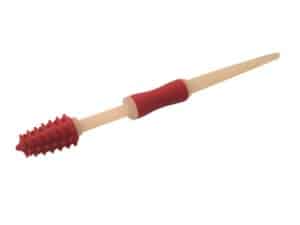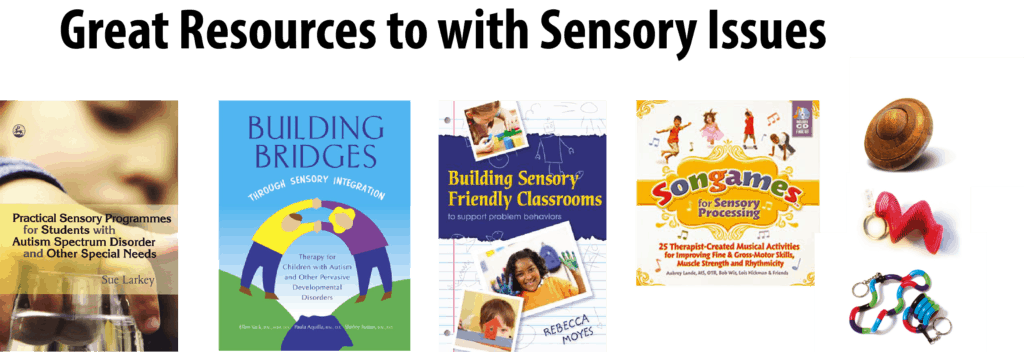Understanding Sensory Needs
Dr Temple Grandin talks a great deal about her sensory needs, how sensory has been one of her biggest challenges in life, and how a huge amount of her behaviour could have been stopped by some simple clothing changes (e.g. pants not dresses). By recognising and understanding a child’s sensory needs we can put in place different strategies to help alleviate their discomfort and improve their behaviour.
Many people try to stop behaviour in children with ASD. But we now know there is a hierarchy – they always replace one behaviour with another. If you take away fidget toys, or things they have in their hands they will replace it with body behaviour. For example, if you stop them chewing their collar they may chew their hand, fingernails, etc. Therefore, rather than trying to stop the behaviour just find appropriate replacements and manage the behaviour instead. This is why the use of sensory tools is so important as a replacement for many behaviours observed in children.
Sensory tools are like glasses – you need the correct script! When I get my eyes tested they get me to compare which glass I can see best through, selecting sensory tools is much the same you will need to try a few so you can compare which is more effective in which situation.
Create a Communication / Sensory Tool. Use FINISH visual below to copy, laminate and attached to slinky, twist puzzle, or 15 sec liquid timer.
The Need to Chew
Children with autism have difficulty in regulating their sensory experiences. They can have hypersensitivity or hyposensitivity to various sensations. Excessive chewing is an example of sensory regulation. These children chew, not because they want to destroy clothing, or other objects, but because they may like or need the sensation that they get by chewing. Often when people take away the objects they are chewing they will replace it with their body: arm, hand, fingernails, hair or make noises to create vibration in their mouth. It is very important
we address the chewing behaviour and if possible see an Occupational Therapist for assistance, as they can usually guide you to the sensory issue and solutions.
The best way to support students who chew is by replacing body or objects with a special chewing sensory tool, for example Chewy Tubes, Chew Stixxs, Chew Stixx Pencil Toppers or Chewigems see below.
Chewigem Necklaces: These are a range of necklaces designed to look great while discreetly serving a child’s need to chew. Great for children who chew their collars as well as children who have a weak jaw motion and need to practice their chewing. (Note: these are not suitable for aggressive chewers – we recommend Chewy Tubes instead.)
Chewing tools give children the sensory experience they require, and thus they automatically stop chewing on other things. I personally was pessimistic if they would work when I first tried these, however I have had nothing but success!
Oral Stimulation
Oral Stimulation refers to different techniques to stimulate different parts of the mouth. While these exercises provide stimulation to the mouth, they may decrease the need for the child to chew. Oral stimulation can be done by a trained therapist, or it can be done in the form of activities with the child. Some activities that can provide oral stimulation are: drinking through a straw, blowing balloons, bl les
and we have the Senso Brush Oral Stimulator.
Great Replacement Sensory Tools
Download Easy to Print Copy of this Details click this Tips Sheet – Sensory Strategies






 Sorry we no longer ship items outside Australia. Please consider the digital versions of Sue’s Books –
Sorry we no longer ship items outside Australia. Please consider the digital versions of Sue’s Books – 